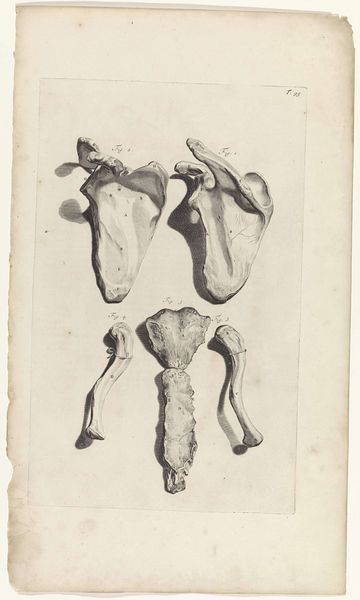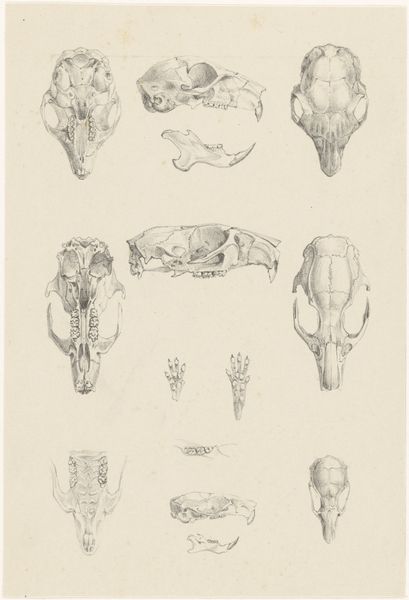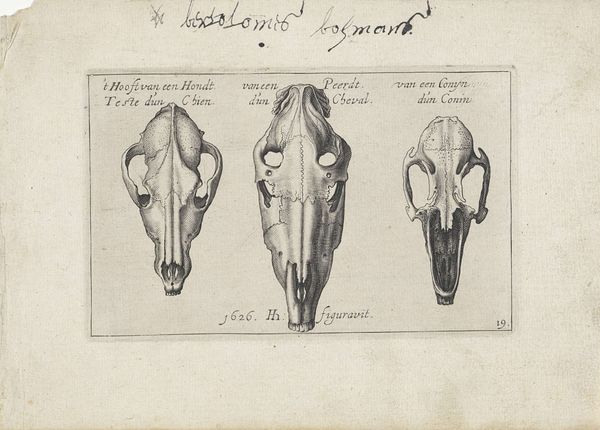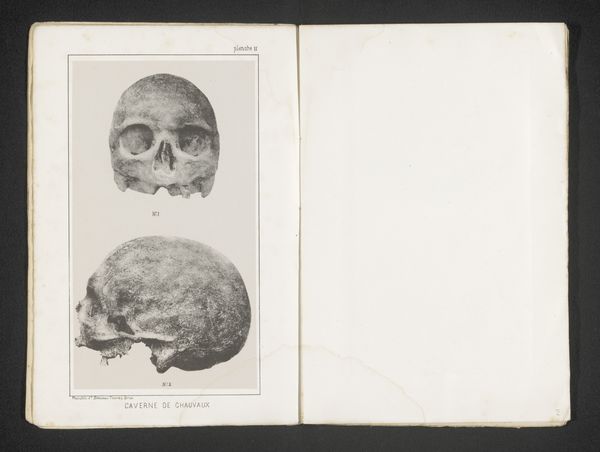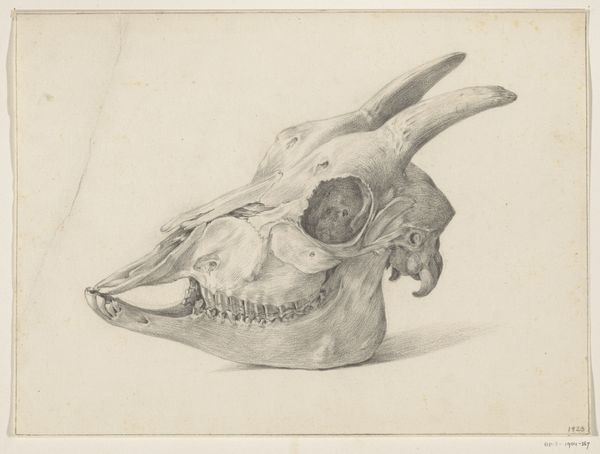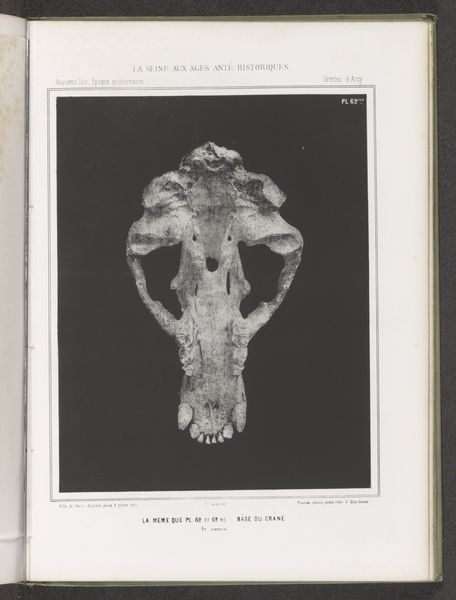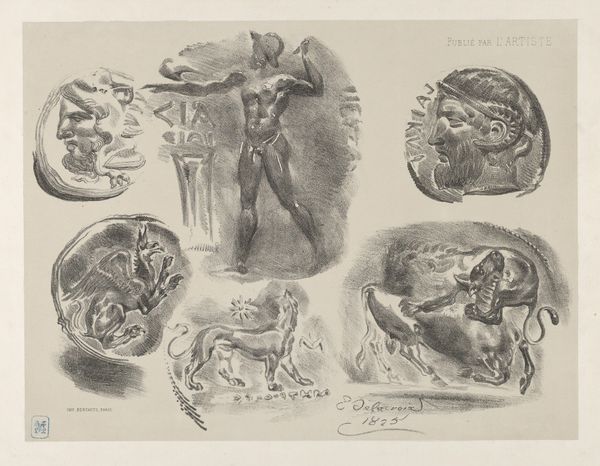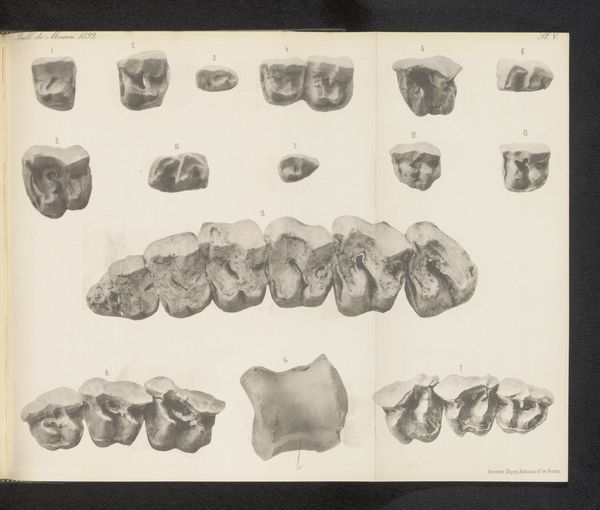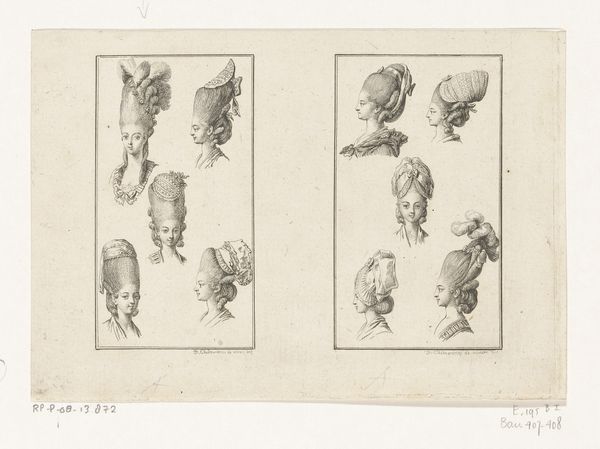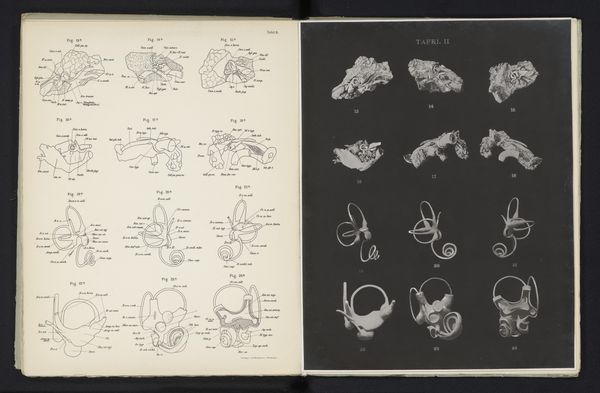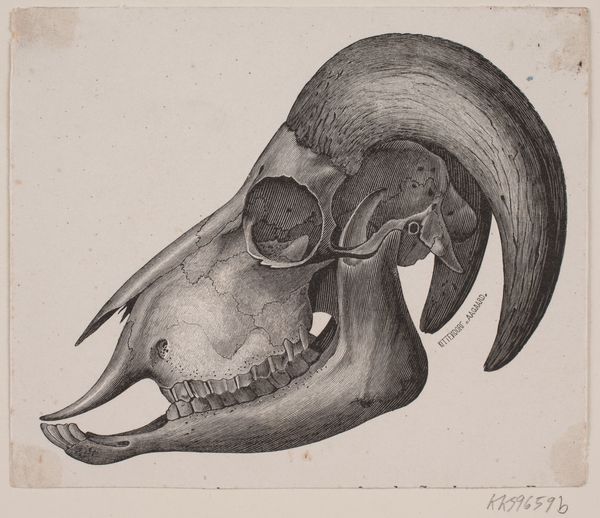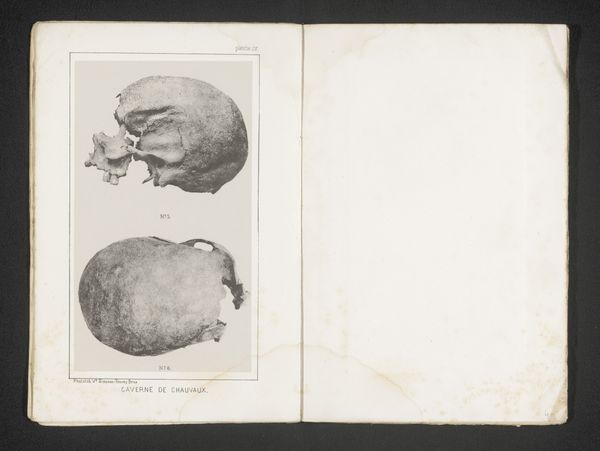
drawing, dry-media, pencil
#
drawing
#
aged paper
#
light pencil work
#
sketch book
#
incomplete sketchy
#
hand drawn type
#
dry-media
#
personal sketchbook
#
hand-drawn typeface
#
pen-ink sketch
#
pencil
#
sketchbook drawing
#
academic-art
#
sketchbook art
Dimensions: height 226 mm, width 290 mm
Copyright: Rijks Museum: Open Domain
Editor: This is a drawing entitled "Vier aangezichten van eens schedel van een wolharige neushoorn," created before 1893 by Nabholz & Co. Scherer. It's a pencil drawing that looks like it comes from a sketchbook, portraying four different views of what appears to be a woolly rhinoceros skull. I find the starkness of the subject matter really compelling. How do you interpret this work, given its historical context? Curator: Well, viewing it through a contemporary lens, I'm struck by the implications of documenting extinct species. It raises questions about our role in environmental destruction and the power dynamics inherent in scientific exploration. What do you notice about the relationship between science and art in this drawing? Editor: I guess I hadn't really thought about the link between art and science in this case, but it feels very precise, almost clinical, rather than an attempt to aestheticize the skull. Does that precision influence how we see the drawing in a historical context? Curator: Absolutely. In the late 19th century, scientific illustration was crucial for disseminating knowledge. However, we must also acknowledge that these scientific endeavors often took place within colonial frameworks. Who benefited from this knowledge, and what were the potential consequences for both human and animal populations? Think about it as more than just documenting but asserting dominance over the natural world. Does knowing this change your perspective? Editor: It does. I see it now not just as a neutral scientific study, but a piece embedded in a history of environmental exploitation and a claim to authority. Curator: Exactly. Recognizing these contextual layers helps us engage with the artwork in a more critically informed way. Editor: I’ll definitely consider those power dynamics the next time I encounter something like this. It gives a new weight to the image, seeing it as both art and scientific record but also something tied to colonialist perspectives. Curator: Precisely. Now we both see it in its full complexity.
Comments
No comments
Be the first to comment and join the conversation on the ultimate creative platform.
